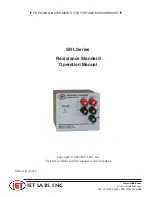
FIG. 9
FIG. 10
FIG. 11
FIG. 12
d) Place the nasion relator on the face-bow cross bar, when
using the face-bow Standard. For both models, centre the
nosepiece on the patient's nasion. Attention to the correct
position of the nazium relator as indicated in picture 7.5b.
The earpieces should now be carefully positioned as deeply
as possible in the patient's auditory meatus and the
nosepiece should be gently pressed against the patient's
nasion while tightening the wing nuts of the nazion relator
assembly (fig. 8). Afterwards, tighten the three screws of the
Standard face-bow (fig. 9 and 14).
e) With the nazion relator and the face-bow tightened and the
patient holding the fork immobile, push the fork fixation
assembly forward, sliding it on the fork handle until it is as
close as possible to the lips, without touching them, in order
to achieve increased stability. Then tighten the wing nuts of
the fork: first the double articulated nut (connection block)
(fig. 3) and then the horizontal slide bar nut, so that the fork is
supported at one end of its handle, resulting in less tension
on it (fig. 10 and 11). To ensure proper registration, ask the
patient to remove his thumbs from the bite fork and check if
the fork and the face-bow are stable and immobilized (fig.
12).
f) When using the articulator model 4000-S, record the
approximate intercondylar distance, whose reading is taken
on the front edge of the face-bow Standard. The three
numbers (1, 2 and 3), separated by a reference mark,
correspond to the intercondylar distances: small, medium
and large. When the reference mark is aligned with the
distance indicator, always use the smallest distance for the
patient. This information should be registered in the patient´s
records for subsequent adjustment of the articulator.
In other articulator models, the intercondylar distance
Note:
is fixed at an average of 110mm and the intercondylar
distance is not adjustable. In this case, disregard the above-
described registration of the face-bow.
FIG. 8
3
Wrong Position (fig. 7.5a)
Correct Position (fig. 7.5b)







































